During the 5,000 years Burns Bog has been in existence, it has meant many different things to many different people. The bog is generally recognized to be globally unique on the basis of its chemistry, rare flora and fauna, natural habitat for a large variety of wildlife and for its unusually large land mass. Located near the mouth of the Fraser River in lower British Columbia, it is the largest raised bog on the west coast of North America and is one of the largest in the world. It contributes to global biodiversity because of its storage of greenhouse gases, its importance as a nature reserve and as a wilderness area.
In the early days, the First Nations People, comprised of the Tsawwassen, the Semiahmoo, the Katzie, the Musqueam, the Squamish and the Sto:lo Nations predominately, set up temporary villages in the bog during the summer months coinciding with the salmon runs. They hunted and gathered food using many of the unique plants in the bog for much of their necessary requirements.
These plants were used for medicinal purposes such as removing corns and warts; for the treatment of skin ailments and as a medicinal drink; for ailments such as sore throats and colds, and for making tea. Many of the berries found in the bog were eaten fresh or dried into cakes and were an important source of their diet. Many of the forty species of peat moss were used for their absorbent qualities for use as feminine hygiene products, diapers and bedding.
Burns Bog is home to more than 150 species of birds, insects, the rare Mariposa butterfly and a rare dragonfly population. Black bear, blacktail deer, red fox, bobcat, coyote, beaver, muskrat, snowshoe hare and porcupine also inhabit the bog. The bog is also a habitat for many threatened and endangered species such as the Southern Red-Back Vole, a rodent thought to be extinct, various Heron, Falcon, Trumpeter Swans, Caspian Tern, Barn Owl, Painted Turtle and the Greater Sandhill Crane whose numbers are down to between 9 – 11 per year, at last count. In First Nations mythology, it is said that the Sandhill Crane “darkened the skies” with its great migratory numbers during their annual arrival to the Lower Mainland each spring. The bog is also inhabited by 22 species of raptors, 10 species of amphibians, 6 species of reptiles, 48 species of small mammals and several species of larger mammals.
As well as the diverse and rare wildlife in the bog, there are many plants that are remnants left following the retreat of ice during the last ice age. Several shrub species found in the bog are more normally found much further north. Only a few specialized plants can survive and thrive because of the particular growing conditions found within the bog. Rainwater is the main source of water and because there are few minerals or nutrients, the growth of most plants is inhibited. Much of the plant life is unique and rare including a rare moss, the ‘sphagnum fuscium’ and ericsceous plants.
To the present time, Burns Bog continues to remain an important aspect in First Nations mythology and also in terms of cultural, traditional and current uses.
During World War II Burns Bog was controlled by the United States Army in order to use the peat moss to refine magnesium to be used for artillery shells. However, it never was used for that purpose. Also, between the 1930’s and 1984 a thriving business was conducted in the harvest of peat moss. This business threatened the many beautiful and rare plants within the bog.
Over the years Burns Bog has been threatened with many development proposals such as a deep-sea port, housing for 100,000 people, a world-class thorough-bred race track and an amusement park. The outside edges of the bog have already been disturbed with a landfill site, drainage ditches and adjacent blueberry farms. Even assuming there was no further disturbance to the bog, the damaged portion, due to its slow growth, would take 50 – 100 years to renew its self.
As well as farming and other development slowly eating away some areas of the bog, the intrusion of non-native plants such as scotch broom and blackberry bushes are becoming problematic as they intrude on this unique area. Visitors, walking on other than designated trails, have also impacted the environment of the bog.
Burns Bog’s history has been as diverse as the opinions abounding concerning its future. It’s been a future that at many times has been uncertain and as a result development and destruction have occurred. Many organizations, like The Burns Bog Conservation Society, as well as many private citizens, are bitterly opposed to development of the bog.
The Burns Bog Conservation Society, officially established in 1988, has focused its efforts on protecting the bog, fighting further development in order to preserve the ecological integrity and viability of Burns Bog.
The bog has international importance, known world-wide by environmentalists. It acts as a carbon sink trapping greenhouse gases such as carbon dioxide and methane, which if released, would be a huge contributor to global warming.
During decomposition, as would happen with development, greenhouse gases would be released. Therefore, many feel that it is important to keep the bog intact to assist in slowing the acceleration of global warming. It is important to preserve and enhance the vital ecological functions of the bog as living organisms in Burns Bog act together to produce a self-sustaining ecosystem. Bogs are also important for the fact that they filter the air and water, release oxygen, soak up potential flood waters and release nutrients into the river for the fish.
It is each of our responsibility to protect the bog and other areas like it to ensure that there is a continued habitat for the many endangered species and animals that have found refuge in the bog, as well as the rare bird life, to ensure that we continue to have nature reserves and wilderness areas. Civilization should not be allowed to intrude on an area that offers so much to our community.
On March 24, 2004, the Government of British Columbia purchased 5,000 acres of Burns Bog. But the need to protect Burns Bog is still far from over.
Several major blazes have threatened the future of Burns Bog. Because of the methane and rich peat, a fire can burn for months in the bog. In 1996 Vancouver was covered in smoke and ash for two days, destroying 170 hectares and costing more than $200,000 to extinguish. With each fire there has been substantial damage to the bog. It will require many years to renew itself.
Plants, such as the Drosera Rotundifolian plant, a small carnivorous perennial, were used for medicinal purposes, such as removing corns and warts. It was also used as a good luck charm for fishing. The Kalmia Micophylla Occidentalis plant was used for treatment of skin ailments and as a medicinal drink, sometimes causing dizziness and cramps. The dried leaves of the Rhododendron Groenlandicum plant were used to make a tea. It was used for such ailments as sore throats and colds. The twisted roots of the Pinus Contorta plant were used to make ropes and the bark was used for medicinal purposes. The stem of the Spirea Douglasii plant was used for collecting marine shells which were traded with other groups or used as currency. Many of the forty species of peat moss (sphagnum) were used for their absorbent qualities as feminine hygiene products, diapers and bedding. Much of the edible berries were harvested and dried to add to their winter food supply The berries from the Vaccinium Oxycoccus plant were cooked and served in oolichan grease, eaten fresh or stored in moss. The berries from the Vaccinium Uliginosum plant were eaten fresh or dried into cakes. These berries were an important source of their diet as was the Rubus Chamaemorus plant, which was a staple food.
The Haida, Nisgas and Tsimshim bands also occasionally used some of the plants within the bog but were not part of the predominant First Nations People who made the bog their home.
Monday, August 30, 2010
Subscribe to:
Post Comments (Atom)










































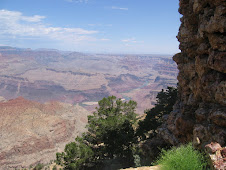
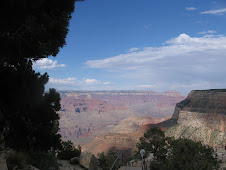
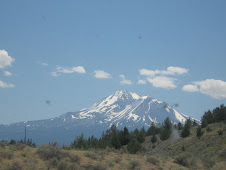



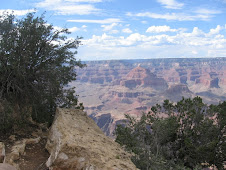
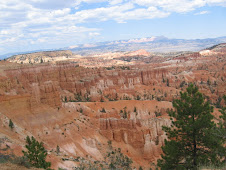
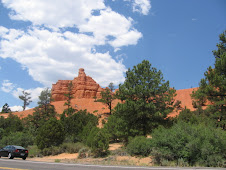


































No comments:
Post a Comment